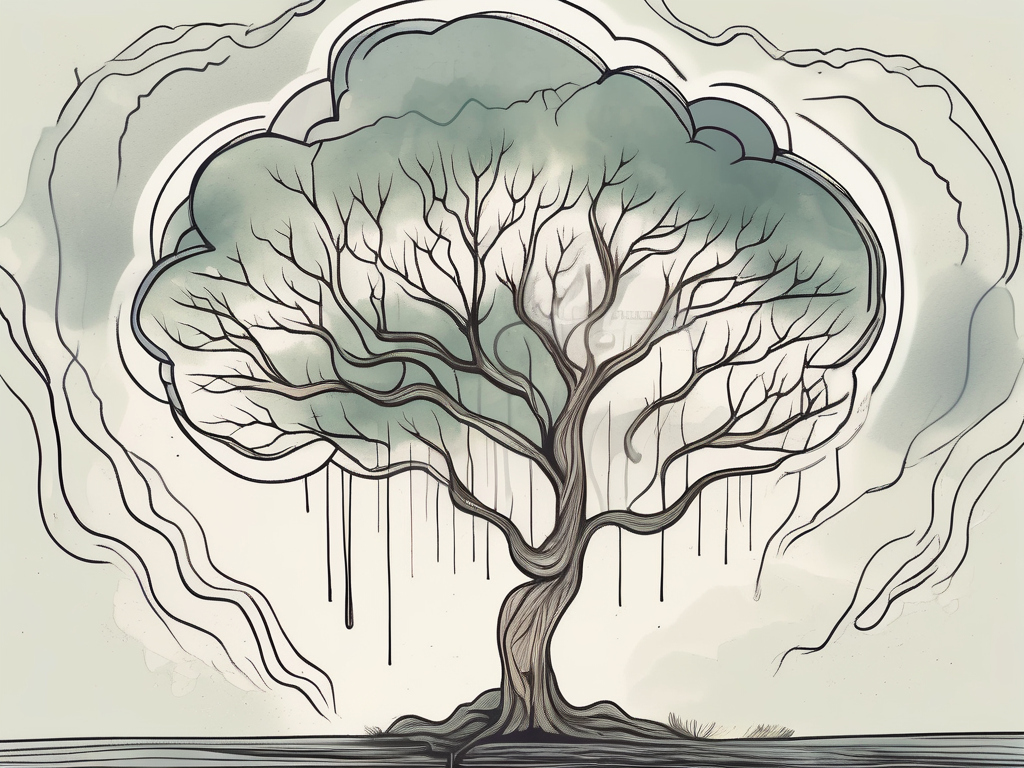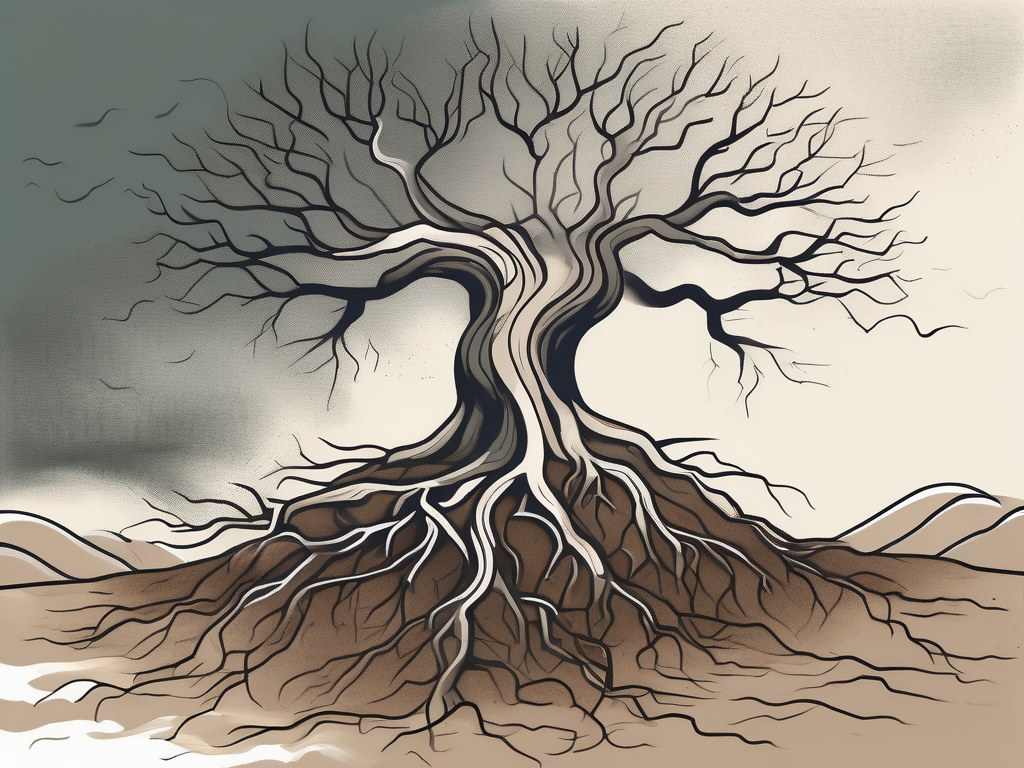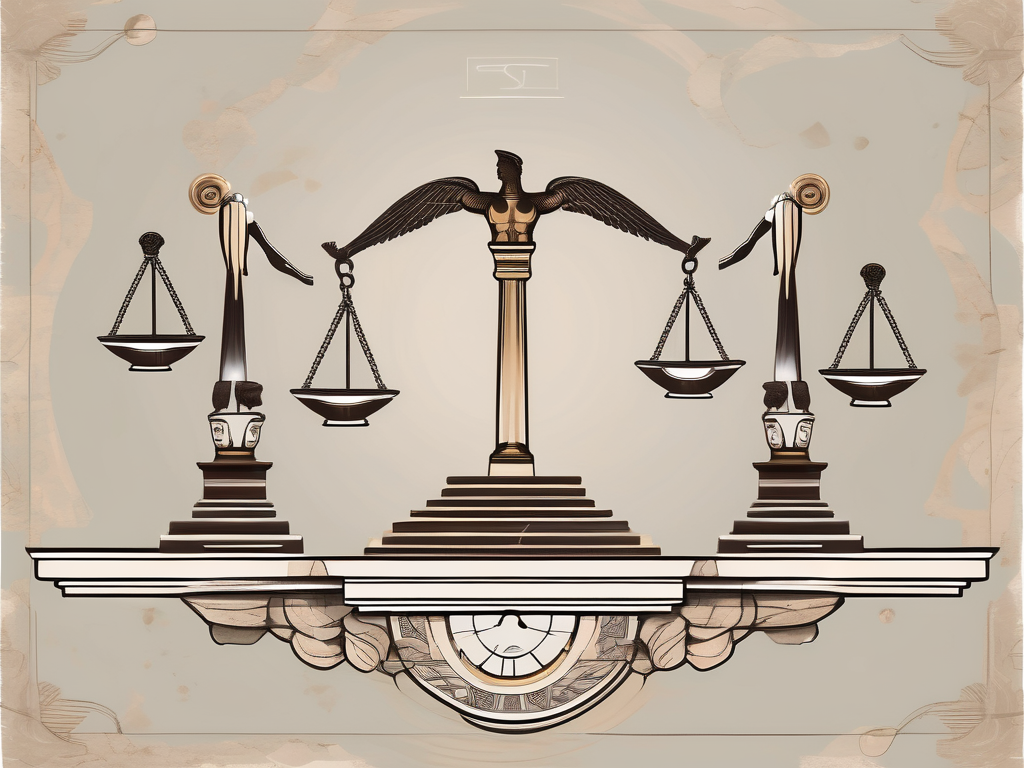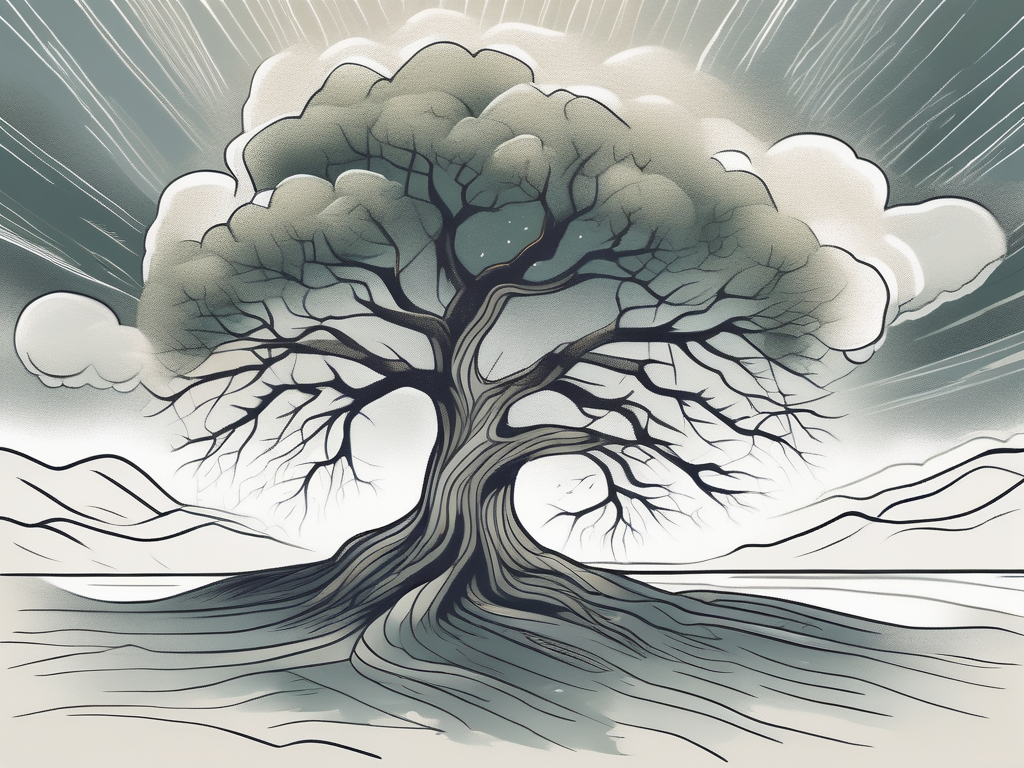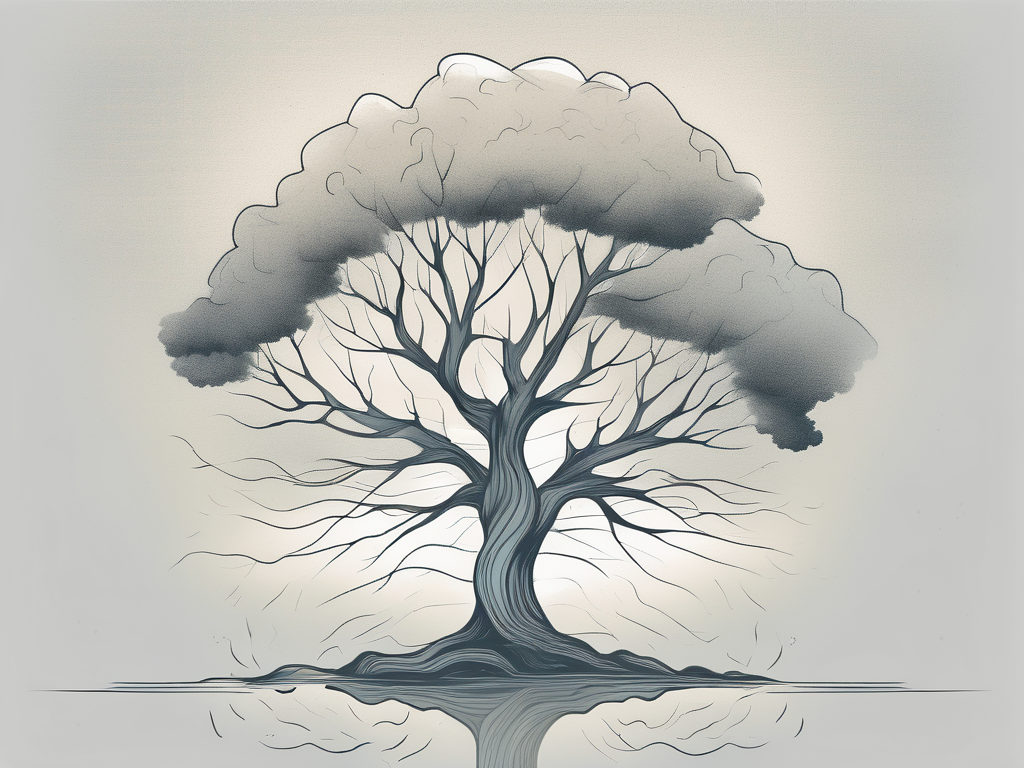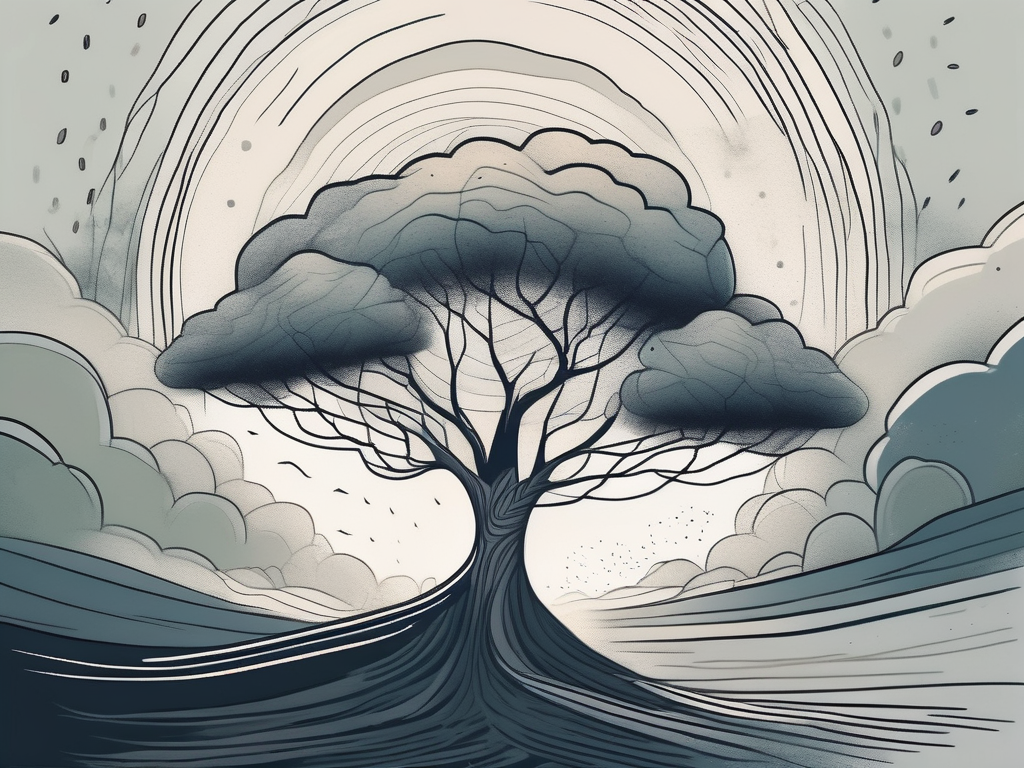Stoicism is a philosophy that has been gaining popularity in recent years, with many people turning to its teachings to find inner peace and personal strength. At the heart of Stoicism lies the concept of negative visualization, a powerful practice that allows individuals to prepare for and appreciate life’s inevitable challenges. By embracing the philosophy of Stoicism and incorporating negative visualization into our daily lives, we have the potential to unlock tremendous personal growth and transformation.
Understanding the Philosophy of Stoicism
Before diving into the world of negative visualization, it’s important to have a good grasp of the philosophy of Stoicism itself. Stoicism originated in ancient Greece and was further developed by notable thinkers like Epictetus, Seneca, and Marcus Aurelius. At its core, Stoicism teaches us to focus on what is within our control and to accept with grace what is beyond our control.
Stoicism, with its rich history and influential thinkers, has had a profound impact on Western philosophy and continues to be relevant in modern times. The teachings of Stoicism offer practical guidance on how to live a fulfilling and meaningful life, even in the face of adversity.
The Origins of Stoicism
Stoicism traces its roots back to the 3rd century BCE, when Zeno of Citium founded the philosophy in Athens. Zeno, a student of Crates of Thebes, was inspired by the teachings of Socrates and the Cynics. He believed that individuals could achieve inner calm and contentment through the practice of virtue and reason.
During its early years, Stoicism gained popularity among the educated elite in Athens and spread throughout the Hellenistic world. It attracted followers from various walks of life, including philosophers, statesmen, and even emperors.
Key Principles of Stoicism
Central to Stoicism are four key principles: courage, self-control, justice, and wisdom. These virtues guide Stoics in their pursuit of a well-lived life and provide a framework for making decisions and navigating through challenging situations.
Courage, the first principle, encourages individuals to face their fears and challenges head-on. Stoics believe that by cultivating courage, one can overcome obstacles and grow stronger in the process.
Self-control, the second principle, emphasizes the importance of mastering one’s desires and impulses. Stoics believe that by practicing self-control, individuals can achieve inner tranquility and avoid being swayed by external circumstances.
Justice, the third principle, calls for fairness and equity in our interactions with others. Stoics believe that by treating others with kindness and respect, we contribute to the overall well-being of society.
Wisdom, the final principle, is seen as the culmination of the other virtues. Stoics believe that by seeking wisdom, individuals can gain a deeper understanding of the world and make better choices in life.
By embracing these principles, Stoics aim to cultivate a sense of inner peace and live in harmony with nature. They strive to detach themselves from external outcomes and focus on developing their character and virtue.
The Role of Negative Visualization in Stoicism
Negative visualization is a technique used by Stoics to prepare for and appreciate life’s hardships. It involves envisioning worst-case scenarios and mentally preparing ourselves for them. While this may seem counterintuitive, the practice of negative visualization actually allows us to develop resilience, gratitude, and a greater sense of perspective.
Defining Negative Visualization
Negative visualization involves deliberately contemplating undesirable outcomes or losses that could occur in our lives. By visualizing and facing these potential challenges in our minds, we cultivate an inner strength that helps us navigate adversity when it arises.
Imagine, for a moment, a Stoic philosopher sitting in a serene garden, deep in thought. As they close their eyes, they begin to visualize a scenario where they lose all their material possessions. They imagine their house burning down, their bank accounts being wiped clean, and their cherished belongings disappearing into thin air. This exercise may seem distressing at first, but it serves a purpose.
By mentally rehearsing such difficult scenarios, the Stoic philosopher is not only preparing themselves for the worst but also training their mind to detach from material possessions. They learn to appreciate the impermanence of things and find solace in the fact that true happiness does not rely on external circumstances.
The Purpose and Benefits of Negative Visualization
The purpose of negative visualization is not to dwell on negativity but rather to prepare ourselves for any circumstances that may arise. By mentally rehearsing difficult scenarios, we can develop the emotional resilience needed to face challenges head-on.
Consider a Stoic practitioner who visualizes the possibility of losing their job. They imagine the feelings of uncertainty, financial strain, and potential setbacks that may come with such a situation. This exercise allows them to mentally prepare for the worst-case scenario and develop a plan of action. They may start saving money, expanding their skill set, or building a support network to navigate the challenges that may lie ahead.
Moreover, negative visualization helps us cultivate gratitude for what we have. As we become more aware of life’s uncertainties and the impermanence of things, we learn to appreciate the present moment and the blessings it brings. The Stoic philosopher, after visualizing the loss of their material possessions, opens their eyes to the beauty of their surroundings. They notice the vibrant colors of the flowers, the gentle breeze rustling the leaves, and the warmth of the sun on their skin. They feel a deep sense of gratitude for the simple pleasures that often go unnoticed.
By incorporating negative visualization into our lives, we can develop a greater sense of perspective. We realize that the challenges we face are not insurmountable and that there is always an opportunity for growth and learning. This practice allows us to approach life with a calm and steady mindset, knowing that we have prepared ourselves for whatever may come our way.
In conclusion, negative visualization is a powerful tool in Stoicism that helps us prepare for and appreciate life’s hardships. By envisioning worst-case scenarios and mentally rehearsing difficult situations, we develop resilience, gratitude, and a greater sense of perspective. It is through this practice that we can find strength in adversity and embrace the impermanence of life with grace.
Applying Stoicism and Negative Visualization in Everyday Life
Stoicism is not purely a philosophical concept; it is a practical philosophy that can be applied in our daily lives to bring about profound personal growth. By understanding and implementing Stoic principles, we can navigate the complexities of life with resilience and tranquility. One of the key practices within Stoicism is negative visualization, which involves imagining the worst-case scenarios in order to cultivate gratitude and prepare ourselves for adversity. Here, we will explore some practical steps you can take to implement Stoicism and negative visualization into your own life.
Practical Steps to Implement Stoicism
Start by focusing on what is within your control. Recognize that external events and circumstances are often beyond your influence, but how you respond to them is within your power. Stoicism teaches us to shift our attention from the uncontrollable to the controllable, allowing us to channel our energy into productive and meaningful actions.
Practice maintaining a calm and stoic demeanor in the face of adversity. When challenges arise, take a moment to pause and reflect before reacting impulsively. Embrace the idea of accepting what cannot be changed, and instead, focus on finding solutions and adapting to the situation at hand. By cultivating this mindset, you will develop a sense of inner peace and resilience that will guide you through life’s inevitable ups and downs.
Techniques for Effective Negative Visualization
When practicing negative visualization, it is important to engage all your senses to make the visualization more vivid. Close your eyes and imagine the worst-case scenario as if it were happening in the present moment. Visualize the details, the emotions, and the challenges you would face. By immersing yourself in this exercise, you desensitize yourself to potential setbacks, enabling you to approach difficulties with a clear and composed mind.
Furthermore, negative visualization can also serve as a powerful tool for cultivating gratitude. By imagining the loss of something or someone we hold dear, we gain a deeper appreciation for their presence in our lives. This exercise allows us to recognize the value of what we have and fosters a sense of gratitude that extends beyond material possessions.
In addition to gratitude, negative visualization can help us prepare for the uncertainties of life. By mentally rehearsing worst-case scenarios, we become better equipped to handle unexpected challenges. This practice not only enhances our problem-solving skills but also strengthens our emotional resilience, enabling us to navigate difficult situations with grace and composure.
Remember, Stoicism and negative visualization are not quick-fix solutions, but lifelong practices that require dedication and commitment. By incorporating these principles into your daily life, you will gradually develop a stoic mindset that empowers you to face life’s challenges with wisdom, strength, and tranquility.
Overcoming Challenges in Practicing Stoicism and Negative Visualization
As with any practice, there are challenges that may arise when implementing Stoicism and negative visualization in our lives. Overcoming these obstacles is crucial to maintaining a consistent practice and reaping the full benefits of these powerful philosophies.
Common Misconceptions about Stoicism and Negative Visualization
One common misconception is that practicing Stoicism and negative visualization means suppressing emotions or denying ourselves joy. However, Stoicism is not about extinguishing emotions but rather developing mastery over them. It is about finding equanimity and balance in all aspects of life.
When practicing Stoicism, it is important to recognize that emotions are natural and should not be suppressed. Instead, Stoicism teaches us to acknowledge our emotions, understand their root causes, and respond to them in a rational and constructive manner. By doing so, we can cultivate emotional resilience and maintain a sense of inner peace even in the face of adversity.
Negative visualization, another key aspect of Stoicism, is often misunderstood as a pessimistic or gloomy practice. However, it is actually a powerful tool for cultivating gratitude and preparing ourselves for life’s inevitable challenges. By envisioning worst-case scenarios, we can develop a greater appreciation for what we have and be better equipped to handle difficult situations when they arise.
Tips for Consistent Practice
To stay consistent in your Stoic practice, find supportive communities or like-minded individuals who share your interests. Engage in philosophical discussions, read Stoic literature, and seek inspiration from the ancient Stoic philosophers.
Joining a Stoic study group or participating in online forums can provide valuable insights and support. Sharing experiences and learning from others can help reinforce your commitment to Stoic principles and provide guidance when faced with challenges.
Additionally, reading Stoic literature, such as the works of Marcus Aurelius, Epictetus, and Seneca, can deepen your understanding of Stoic philosophy and provide practical advice for applying its principles in daily life. These ancient texts offer timeless wisdom that can inspire and guide you on your Stoic journey.
Remember that Stoic principles are lifelong pursuits, and it’s essential to be patient and persistent in your journey. Embracing Stoicism is not a quick fix, but a continuous practice that requires ongoing effort and self-reflection.
As you encounter challenges along the way, remind yourself of the benefits of Stoicism and negative visualization. By cultivating emotional resilience, finding balance, and developing gratitude, you can navigate life’s ups and downs with greater ease and contentment.
Measuring Personal Growth through Stoicism and Negative Visualization
As you delve further into Stoicism and incorporate negative visualization into your life, you’ll begin to notice signs of personal growth and transformation.
Identifying Signs of Progress
Signs of progress may include a greater ability to remain calm in challenging situations, increased gratitude for the present moment, and a heightened sense of purpose and self-awareness. You may find yourself responding to difficulties with greater resilience and wisdom, and recognizing the impermanence of external circumstances.
Maintaining Momentum in Personal Growth Journey
To maintain momentum in your personal growth journey, continue to practice self-reflection and regularly reassess your values and goals. Stay committed to the principles of Stoicism and make them an integral part of your daily life. Remember that personal growth is a lifelong journey, and each day presents an opportunity for growth and improvement.
In conclusion, Stoicism and negative visualization offer powerful tools for personal growth and a more meaningful life. By understanding the philosophy of Stoicism, embracing negative visualization, and consistently applying these practices, we can foster resilience, gratitude, and a greater sense of purpose. It is through these practices that we truly harness the power of Stoicism to cultivate personal growth and navigate life’s challenges with strength and grace.
